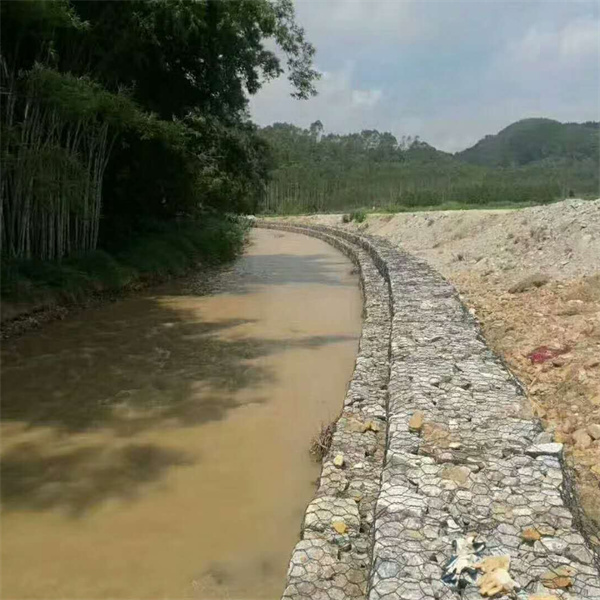Gus . 21, 2024 16:50 Back to list
Oyster Gabion Production and Manufacturing Solutions for Coastal Protection and Restoration
The Role of Oyster Gabion Manufacturers in Coastal Management
The rising concern over coastal erosion and habitat loss has accentuated the need for innovative solutions in environmental engineering. One such solution is the use of oyster gabions, structures designed to mimic natural oyster reefs while simultaneously providing protection to coastlines. As the demand for these eco-friendly structures grows, the role of oyster gabion manufacturers becomes increasingly significant.
Oyster gabions are typically composed of wire mesh cages filled with natural materials such as rocks, sand, or even plant matter. The primary purpose of these gabions is to provide a stable foundation for oyster larvae to settle on, promoting the growth of new oyster populations. Oysters play a vital role in coastal ecosystems by filtering water, providing habitat for various marine species, and protecting shorelines from erosion.
One of the key components of successful oyster gabion deployment lies in the innovation and quality offered by manufacturers. Companies operating in this field must not only produce durable and effective gabions but also ensure that their designs align with ecological principles. This often involves collaborating with marine biologists and environmental scientists to create products that support marine life and contribute to ecosystem restoration.
When selecting an oyster gabion manufacturer, several factors should be considered. First and foremost is the quality of materials used in production. Manufacturers must source high-quality, corrosion-resistant wire mesh and reliable fill materials to ensure the longevity and effectiveness of their gabions. The design of the gabions is also crucial; a well-constructed gabion should facilitate water flow while providing a stable surface for oysters to grow.
oyster gabion manufacturer

Moreover, sustainable practices are increasingly being prioritized by consumers and regulatory authorities
. Manufacturers are expected to follow eco-friendly protocols, from sourcing materials responsibly to ensuring that their production processes do not harm the environment. Many leading oyster gabion manufacturers are now embracing sustainability, integrating recycled materials into their designs, and reducing their carbon footprint.
The benefits of oyster gabions extend beyond ecological advantages; they can also provide economic opportunities for coastal communities. By enhancing oyster populations, these structures can support local fisheries and boost tourism through ecotourism initiatives. Additionally, protecting coastlines reduces maintenance costs associated with erosion, preserving valuable land and infrastructure.
Collaboration between oyster gabion manufacturers, government agencies, and local communities is crucial for maximizing the effectiveness of these solutions. Public-private partnerships can facilitate the funding and implementation of large-scale oyster restoration projects, ensuring that gabions are deployed in areas where they can make the most impact. Educational programs focused on the importance of oyster reefs and habitats can further engage communities, encouraging local involvement in conservation efforts.
As the world grapples with the realities of climate change and rising sea levels, the role of oyster gabion manufacturers will continue to grow. By contributing to ecological restoration and coastal protection, these manufacturers will not only protect vital ecosystems but also support the resilience of coastal communities.
In conclusion, oyster gabion manufacturers play a critical role in the intersection of ecology, engineering, and community development. As awareness of coastal issues expands, innovative solutions like oyster gabions will be essential in fostering sustainable practices that protect natural resources and enhance the quality of life for those who live along coastlines. By prioritizing quality, sustainability, and collaboration, these manufacturers are paving the way for a more resilient future, one gabion at a time.
-
Why PVC Coated Gabion Mattress Is the Best Solution for Long-Term Erosion Control
NewsMay.23,2025
-
Gabion Wire Mesh: The Reinforced Solution for Modern Construction and Landscape Design
NewsMay.23,2025
-
Gabion Wall: The Flexible, Seismic-Resistant Solution for Modern Landscaping and Construction
NewsMay.23,2025
-
Gabion Wall Solutions: The Durable, Decorative, and Affordable Choice for Every Landscape
NewsMay.23,2025
-
Gabion Basket: The Durable and Flexible Alternative to Traditional Retaining Walls
NewsMay.23,2025
-
Gabion Basket: The Proven Solution for Slope Stability and Flood Control
NewsMay.23,2025
-
Versatility of Chain Link Fence Gabion
NewsMay.13,2025






